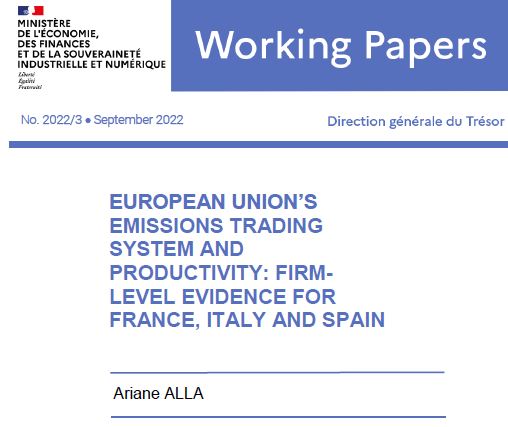European Union's Emissions Trading System and Productivity: Firm-Level Evidence for France, Italy and Spain
This working paper seeks to study the effect of the European Union Emissions Trading System on total factor productivity for manufacturing firms in France, Italy and Spain, from 2000 to 2017. As a general rule, the instrument is not found to be detrimental to regulated firms’ productivity. However, firms have reacted differently depending on their initial efficiency, size, financial constraints, sector, and country; calling for equally different support policies.
The Working Paper series presents work carried out within DG Treasury, disseminated with the aim of enlightening and stimulating public debate. The authors are solely responsible for their work.
The European Union Emissions Trading System (EU ETS) was introduced in 2005 in order to incentivize a reduction in carbon emissions in industrial firms in the most efficient way. Despite a low carbon price during the initial phases of the scheme, the EU ETS did foster a reduction in industrial emissions. A key question, though, is whether these reductions came together with lower productivity, as the scheme has constrained production processes. We study the effect of the EU ETS on total factor productivity (TFP) for manufacturing firms in France, Italy and Spain, from 2000 to 2017. The EU ETS is here considered as a quasi-natural experiment and we apply a difference-in-difference framework. We study whether firms reacted differently depending on their initial efficiency, size, financial constraints, sector, and country; or across the different phases of the implementation. The results suggest that the instrument overall was not detrimental to firms' productivity, except for smaller firms, firms initially far from the technological frontier, and financially-constrained ones. The reform had a positive impact on TFP for larger firms and more efficient or less financially-constrained ones. The impact of the EU ETS is found to be very heterogeneous across sectors, the major beneficiaries being the food, chemicals and metallurgy industries. It is also more positive in France than in Italy and Spain.
